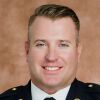Over the last decade, the term aggressive has become an identity in the fire service, to the point that many individuals and organizations identify as being aggressive with a specific tool, appliance or fireground tactic. Some identify their entire crew, even department, as aggressive.
I find the concept of aggressive firefighting interesting, at least how we define it. After all, what does non-aggressive firefighting look like? What are non-aggressive firefighting tools? While those questions are somewhat factious, what is real is that identifying aggressive fireground operations goes much deeper than just what nozzle or hoseline size is utilized. True “aggressiveness” encompasses a variety of skills beyond hose management, ladder work or forcible entry. Mind you, all of these skills are required for Firefighter 1 certification, so again, slightly more seriously this time, what does non-aggressive firefighting look like?
The truth is, true aggressive firefighting – at least how some define it – does require additional knowledge, wisdom, experience, ego control and safety – yes, safety. Let’s take a deep dive into these responsibilities in the context of fireground aggression.
Aggressive knowledge
Firefighter 1 and Firefighter 2 provide the foundation for basic firefighting skills, but there is so much more that we must study and learn to be truly aggressive firefighters. Fire dynamics is at the heart of what we do but a topic we spend the least amount of time studying for full comprehension. To be aggressive, we must study fire behavior and how our tactics impact fire growth. UL’s Fire Safety Research Institute provides additional training that all aggressive firefighters should study. Director Steve Kerber and his team continue to produce impactful research that identifies how our tactics impact fire behavior and, ultimately, the impact on firefighter safety and civilian rescue. Not to forget property loss to our community. As aggressive firefighters, we must study all the data to develop a better understanding of the fire environment. Now, I get it, we all have our opinions based on what we have been taught or what we have witnessed on the fireground. But it is important to be aggressive about knowledge and open your mind to what the research tells us.
Aggressive wisdom
They say with wisdom comes with age, and while I don’t disagree, I do also believe that study, training, experience and perspective impact wisdom. Without wisdom, it is easy to get confused or blinded by bad intel shared via “false prophets” of firefighter training. On the fireground, having wisdom is broader than task-level skills; it’s the ability to use your brain to see, think, predict and react to the events around you. You can’t just put your head down and go; you must engage your brain and balance what you are seeing with what you know and what you are doing. After all, far too many firefighters take actions on the fireground without knowing why. Wisdom is knowing why, when and how. We must be aggressive about growing our wisdom.
Aggressive experience
Having strong experience supports more aggressive tactics. In today’s fire service where working fires are becoming few and far between, it is important to create experience through training, whether simulations, mental walk-throughs, video incident reviews or other real-world-infused training that can provide low-drag opportunities to grow your mental slideshow. And no, training is not a substitute for the real world, so that makes it even more important to design your training to simulate the real world – without shortcuts. That means training in full PPE and integrating command elements whenever possible. Utilize live fire safely, understanding that these are controlled events. Get aggressive about building your experience so you can use it on the fireground.
Aggressive ego control
Chief Alan Brunacini’s famous quote “Ego eats brains” is not any more true than in aggressive firefighting. To be aggressive, we must check our egos at the engine door. Yes, be confident in your skills but not cocky. Firegrounds are distinctly complex, fast-moving scenes that will humble any cocky firefighter very quickly. Checking your ego at the door gives you the capacity to see the full scene – elements that you might miss if your ego is running away from you. Recognize that we are a small part of an incident and that teamwork, along with knowledge, experience and training, are what makes the difference. Checking your ego is critical to being aggressive.
Aggressive safety
To some, safety is the six-letter word that seems to be the opposite of aggressive. To those people, I counter that safety simply enhances aggressiveness; it sets the stage for your actions. You can absolutely operate safely and still be aggressive on the fireground. Developing knowledge, wisdom and task-level skills within a strong organizational culture will create a safe aggressive organization. We should not sacrifice safety for stupidity. Being aggressive in an unsafe manner is simply stupid. Be aggressive about safety, and you’ll be primed to be aggressive on the fireground.
‘Non-aggressive,’ defined
I believe all firefighters want to serve their community and organizations to the best of their ability. The type of nozzle, helmet or gear you use does not impact the aggressiveness of your organization. What does make a difference is the failure to study, gain knowledge, utilize technology, control your ego and practice safe operations, as that is the very definition of a non-aggressive firefighter.



